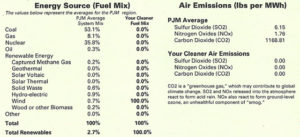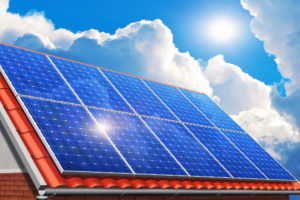I live in Maryland, where I have consumer electricity choice. In other words, it is possible to source my electricity from clean, renewable energy instead of from coal-fired power plants. That’s because in my state (and several others), the utility industry has been deregulated so that competitors can also provide power to meet consumer needs. One of my neighbors, Maurice Belanger, has been buying renewable energy for quite a while. He graciously offered to share his expertise with Big Green Purse readers to help people around the country opt for cleaner energy, too.
Here’s his advice. I hope it helps you choose cleaner, greener energy where you live.

For several years now, I have purchased electricity from a supplier that offers me 100 percent wind-generated electricity. It was surprisingly easy to switch. Yet, talking to my environmentally-conscious friends, I find that many of them are not even aware that they have a choice.
I encourage you to look in to it. Here are a few tips on getting started.
1) Do you have the option? To see if your state offers consumer choice, go to this Web page of the U.S. Energy Information Administration. You’ll see a clickable map of every state. Hover the cursor over your state. A little pop-up menu will tell you whether retail choice for electricity supply is available where you live. According to the EIA map, retail choice is available in Maine, New Hampshire, Massachusetts, Connecticut, Rhode Island, New York, New Jersey, Pennsylvania, Maryland, Delaware, Ohio, Michigan, Texas, and Oregon, plus the District of Columbia.
2) Click on your state outline. You’ll be taken to a page that contains arcane and old information about the status of deregulation in the state. Ignore that. What you want are links to the state Web sites. Click on the link that says [STATE] Web sites, and you will go to a page that will contain links to Web sites relevant to that state. One of them will be to the State Public Service Commission (it has a different name in different states—for example, “the Board of Public Utilities” in New Jersey). For your state, that’s the place to get started.
For example… Since I don’t have room to walk through every state in detail, I will use my state, Maryland, as an example.
Starting with the Energy Information Administration’s clickable map, when I click on Maryland, I go to a page titled, “Maryland Restructuring Active.” In the upper right of that page, there is a list, “Other Links,” and the option to click on the link, “Maryland Web sites.” That takes me to a page with links to some electric utility companies that serve Maryland and to the Maryland Public Service Commission. The link on this page to the Maryland PSC doesn’t work, so I went to Google to find the right page to begin my search for electricity suppliers in Maryland.
On this page, I select a customer type and utility service area. In my case, I’m looking for electricity in the Pepco service area, so I select Electric/Residential/Pepco. I also selected the option for looking only for suppliers who are seeking new customers.

There is a company called Clean Currents. I’ll click on that. (Full disclosure: I am actually getting my power from Washington Gas Energy Services, which was selling 100% wind when I switched several years ago.)
A big button says “Sign Up Now.” Easy enough. I next have to enter my zip code, and click the button, “View Your Rates.” I am given a choice of three offerings, differing in the term of the contract (12 or 24 months) and whether I will purchase renewable energy certificates (RECs, creating demand for wind power across the country) or “Neighborhood Wind” (locally-generated wind electricity, from Pennsylvania).
I can lock in to a 24-month contract for Neighborhood Wind for 11.1 cents per kilowatt-hour. If I choose “enroll now,” I am taken to a page where I must enter my utility account number and personal information for billing. Once I hit submit, Clean Currents will take care of switching my electricity supply. I will continue to receive a bill from Pepco, my electric utility, which will continue to charge for distributing the electricity. Charges from my new supplier (Clean Currents, in this case) will appear separately on the same bill.
If you have your latest electric bill with your account number handy, this entire process takes only a few minutes, depending on how much research you want to do with your supplier options.
4) What will it actually cost? How much is 11.1 cents per kilowatt-hour? If I did not exercise my right to choose a supplier, I would receive Pepco’s “Standard Offer Service.” As of this writing, the price is 9.3 cents per kilowatt-hour. According to my last bill (Nov/Dec), I used 536 kilowatt-hours of electricity, so I would have paid an extra $9.64 with Clean Currents for the month. Pepco’s Standard Offer Service (as of December 2013) is generated by coal (42.7%), followed by nuclear power (33.6%) and natural gas (16.6%). Only 6.6% is generated from renewable sources.
That $9.64 for the month is my environmental premium with Clean Currents. The price of Standard Offer Service goes up and down, as does the price of wind power (though you are protected from price changes for the length of your contract).
5) Bottom Line? Feel good, take a stand, support clean energy.
In the absence of national policy to reduce carbon emissions from power production, we can make our own policy. We can simply stop buying coal-generated electricity. It’s really easy.
Questions? Get them to Diane, and I’ll try to answer them at a later date. I’d love to encourage as many people as possible, if your state permits, to exercise the option to buy clean energy.
Maurice Belanger is an environmentally-minded neighbor, freelance writer, and consumer of green power.
Thanks, Maurice!

















